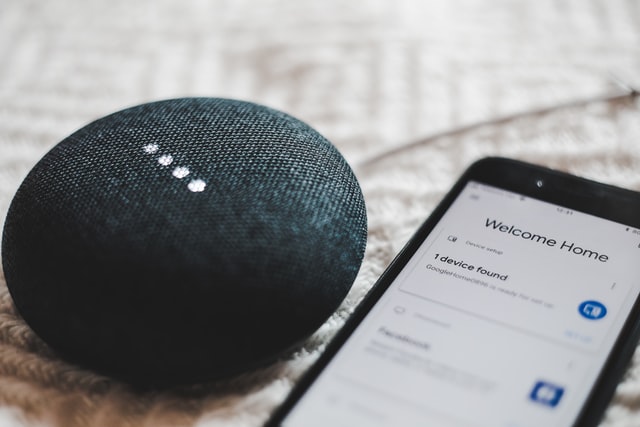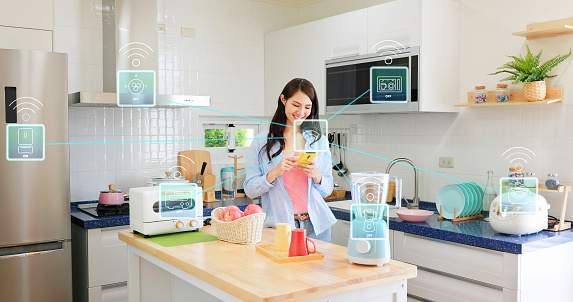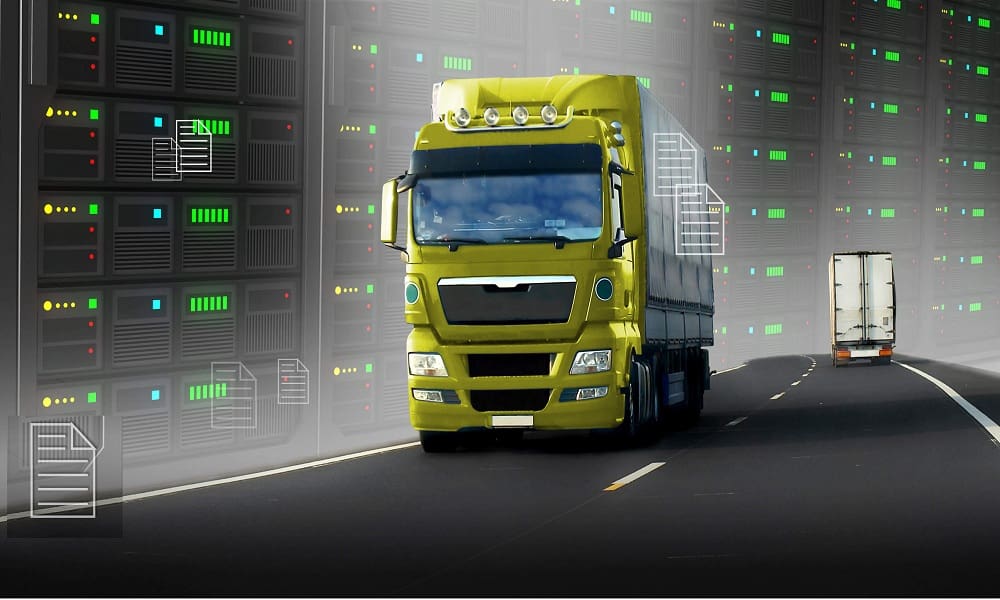Internet of Things, IoT Services & Solutions in New Zealand- OptiTrac

What Are IoT Devices And How Do They Work?
IoT has become one of the most prevalent technologies driving 21st-century innovations. Nowadays, people can connect everyday objects ranging from kitchen objects to thermostats and baby monitors to the Internet. This is made possible through embedded devices and seamless communication between people and things.
IoT uses low-cost computing, big data analysis, mobile technologies, analytics, and cloud technologies to collect and process data with minimal human intervention. IoT allows digital systems to record and monitor interactions with connected things in our hyperconnected world. This is the perfect intersection of the physical world and the digital one.
But, what are IoT devices? These devices are nonstandard computing devices that can connect wirelessly to a network. As of 2021, there are more than 21.7 billion connected devices worldwide today. Out of these, almost 54 percent are IoT devices. Thus, there are more IoT devices than non-IoT devices.
Let’s look at some IoT devices examples.
What Is The Internet Of Things (IoT)?
IoT stands for the Internet of Things. The term was initially coined in 1999 by Kevin Ashton, and however, it only gained global recognition when Gartner added IoT to the list of emerging technologies in late 2011.
As an umbrella term, IoT refers to the billions of physical objects connected to the Internet. These devices collect and exchange data with other systems over the Internet without human interaction.
Even though IoT has existed since the late 90s, only recent advances have made its use practical. These include advances in machine learning and AI technologies, access to affordable and reliable sensors, and increased availability of cloud computing platforms.
IoT devices have a massive range. They range from mundane household cooking and cleaning equipment to sophisticated industrial infrastructure. Each IoT device or component has a UID or Unique Identifier.
What Are IoT Devices?
IoT devices are hardware objects like sensors, gadgets, machines, and other appliances that collect and share data over the Internet with minimal human intervention. These devices are programmed for certain applications and typically embedded into other IoT devices.
For instance, an IoT component fitted in your car can identify the traffic ahead and send an alert to the person you are supposed to meet, informing them about the delay.
How Do IoT Devices Work?
Before we explain the different types of IoT devices, it is crucial to understand how they work. Although different IoT devices have different functions, they are similar in how they operate.
IoT devices are nothing but physical objects that can sense things going on in the physical environment. They comprise an integrated CPU, firmware, and network adapter and are connected to a Dynamic Host Configuration Protocol server. IoT devices require an IP address to access and function over the network.
Most IoT devices are managed, configured, and monitored through a software application. For instance, an app installed on your smartphone can control the light system in your house.
IoT devices often come with integrated web servers, eliminating the need for external applications. These are made possible with motion sensors. For instance, the lights in your room immediately switch on when you enter the space.
What Are The Different Types Of IoT Devices?
Just as there is a wide range of IoT devices, many types of applications are categorized on their usage. Here are a few examples of different types of IoT devices:
1. Consumer IoT devices
Consumer IoT devices include devices primarily for everyday use, such as voice assistants, smart refrigerators, home appliances, home security, light fixtures, and so on.
2. Infrastructure IoT
These include IoT devices deployed by the smart city governing bodies, such as infrastructure sensors, management systems, and so on.
3. Commercial IoT
Commercial IoT is mainly used in the transport and healthcare industries. They include factory monitoring systems, smart pacemakers, bio wearables, etc.
4. Industrial Internet of Things (IIoT)
IIoT is one of the most well-known and well-developed IoT fields. As the name suggests, it is primarily used in industrial applications, especially in the manufacturing and energy sectors. Examples include digital control systems, smart agriculture, and industrial big data.
5. Military Things (IoMT)
IoMT is an advanced field of IoT devices deployed in the military and combat fields. They include devices such as surveillance robots, human-wearable biometrics, etc.
What Are Some Of The Top IoT Devices In 2022?
Enlisted below are some of the top IoT device examples popular in 2022.
1. Google Home Voice Controller
The Googe Home Voice Controller is a smart IoT device that allows users to enjoy entertainment, a thermostat, control the television volume, lights, and so on, using voice commands. It also helps the user plan their day and get things done seamlessly.
2. August Doorbell Cam
The August Doorbell Cam is one of the most popular IoT devices. It allows the user to answer the door from anywhere or even a remote location. It also constantly surveillances your door and captures motion changes caught at your doorstep. This is one of the best IoT devices in your smart home.
3. Foobot
Foobot is a unique IoT innovation that can accurately measure indoor pollution and helps to improve the air quality in indoor public spaces like cafes, workplaces, libraries, and even in the house. It comes with a quick and easy installation process.
4. Nest Smoke Alarm
The Nest Smoke Alarm is a game-changer and a must-have for every household. It is a smoke alarm that identifies and then alerts your smartphone every time there is an unforeseen emergency at your home, and it also automatically tests itself.
5. August Smart Lock
The August Smart Lock is one of the most reliable IoT home security devices. It allows the user to manage their house doors from any remote location. It is generally used to protect the house and keep thieves and strangers away. It gives the user status updates on whether the door is locked correctly or not.
Smart solutions are at the core of what OptiTrac does, and they help companies find smart ways of using IoT technology and devices. OptiTrac IoT products are suitable for tracking goods within an industry but are not limited to it. They serve a wide range of industries, including hospitality, management, manufacturing, agriculture, healthcare, etc.
Frequently Asked Questions
Q1. What are examples of IoT Devices?
There are thousands of IoT devices available in the market, including smart mobiles, smartwatches, smart refrigerators, smart fire alarms, medical sensors, fitness trackers, smart security systems, smart door locks, smart bicycles, and so on.
Q2. What is meant by IoT Devices?
IoT devices refer to hardware like sensors, gadgets, appliances, actuators, machines, etc., that are programmed for certain functions and can transmit data over the Internet or other networks.
Q3. How many IoT Devices are there?
It was estimated that by the end of 2018, there would be over 22 million IoT devices in use across the globe. However, recent forecasts suggest that the total number of IoT devices worldwide is expected to exceed over 38.6 billion by 2025.
Similar Posts

5 Top IoT Tools To Check Out In 2022
The experts predict that the number of active IoT devices will exceed 25.4 billion in 2030. It is......

What Is Project Management Software And What Does It Do?
If you are a budding entrepreneur or a project manager, the right project management software will change your......

What Is Fleet Management System And Its 3 Benefits
During heavy rains in London, Company XYZ fell behind their deliveries, costing the firm a lot of money.......
